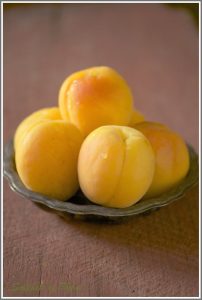Wine sweet wine: It’s not all as naff as some snobs would have you believe
Dry is often seen as more sophisticated but some of our best-sellers are on the sweet side

We like sweet things; witness our love affair with chocolate, cupcakes and fizzy drinks. Yet when it comes to wine, dry is seen by some as more sophisticated, and sweet a little bit naff. This may be a carry-over from the days when we enjoyed Liebfraumilch and Mateus Rosé, both medium-sweet wines. But while we think we prefer dry, some of our best-selling wines are in fact medium-dry, or sweet. This has always applied to white and rosé wines, but in recent years medium-sweet red wines have become hugely popular.
The level of sweetness in wine is measured by grammes per litre of residual sugar. A dry wine will have less than two grammes, a Sauternes 120g-200g, and Pedro Ximénez, the world’s sweetest wine, more than 300g. Prosecco can be anything from 11g/l to 18g/l, while Champagne is generally about 9g/l although there is a trend towards zero dosage, which contain no residual sugar at all.
Traditionally, dessert wines were made by one of three methods; leaving grapes on the vine longer to increase sugar levels; drying grapes on racks for extended periods, or by fortifying with alcohol to arrest the fermentation, as happens with port. Sauternes would be the most famous example of the first method, and Recioto of the second. Dessert wines are very much a minority interest.
A new category of semi-sweet red wine has emerged over the past decade, led by Apothic, produced by Californian producer Gallo. Other brands include Barefoot, Yellow Tail, Menage à Trois and Dadá, now the No 4 brand in Ireland. Most have 12g/l-16g/l residual sugar, which is not a huge amount; 16g per litre equates to a couple of teaspoons of sugar. These wines are sweetened by the addition of rectified concentrated grape must, a clear, odourless, flavourless sugar solution derived from grape juice. Italian wines labelled Appassimento are also hugely popular. These are made by adding partially dried grapes to the fermentation.
The labels do not mention sweetness, instead using terms such as rounded, rich, silky or smooth. Semi-sweet red wines have a ready market and often appeal to those trying out wine. Most of them are soft, easy and fruity and come in big heavy bottles. Many have vanilla, mocha and dark chocolate flavours from oak ageing. I wouldn’t drink them myself, but I don’t criticise others for doing so – although plenty of commentators do.
My gripe is that it is difficult to know what you are buying. Many standard wines now have anything from five to 10g residual sugar. I find that those few grammes tend to dull or muffle the flavours of a wine (red or white) and make it far less interesting.

Apothic Red Winemaker’s Blend 2019, California
13.5%, €12-€15, 16.5 g/l
Soft sweet vanilla and milk chocolate, with juicy raspberry fruits. Party wine possibly?
From Very widely available in supermarkets and off-licences nationwide.

Dadá de Finca Las Moras Malbec 2020, Argentina
13.5%, €10-€12, 12g/l
The least sweet wine with the most pronounced acidity, and jammy loganberries and dark forest fruits. Drink it with a steak or a burger.
From Very widely available in supermarkets and off-licences nationwide.

Luna Argenta 2020, Negroamaro Primitivo Appassite, Puglia
14%, €18.95 (€14.95 from March 7th), 15g/l
Not obviously sweet, medium to full-bodied with slightly pithy dark fruits, coffee, dark chocolate and some tannins on the finish. Try it with barbecued ribs.
From O’Briens, obrienswine.ie

Rinforzo Salento Primitivo IGT 2019, Puglia
14.5%, €21.95 (€16.95 from March 7th), 22g/l
The sweetest of the four wines. Sweet musky spices on the nose, with sweet, ripe rounded fruits and some drying tannins on the finish. Try it with sticky spicy belly of pork.
From O’Briens, obrienswine.ie








